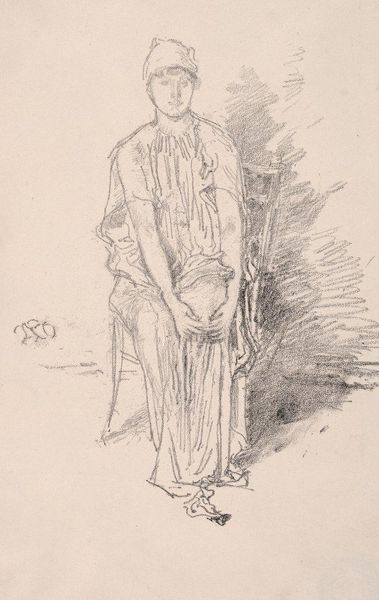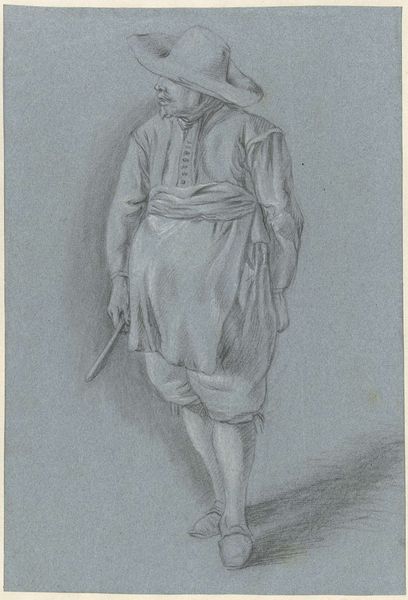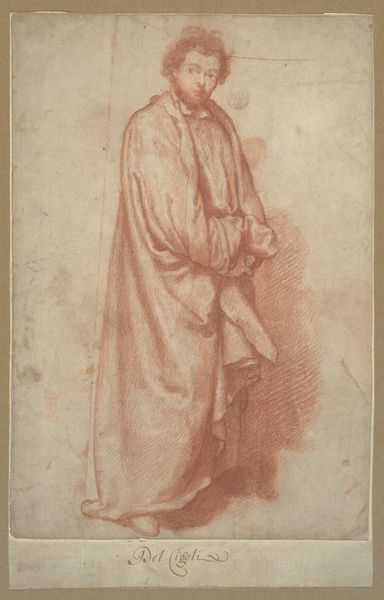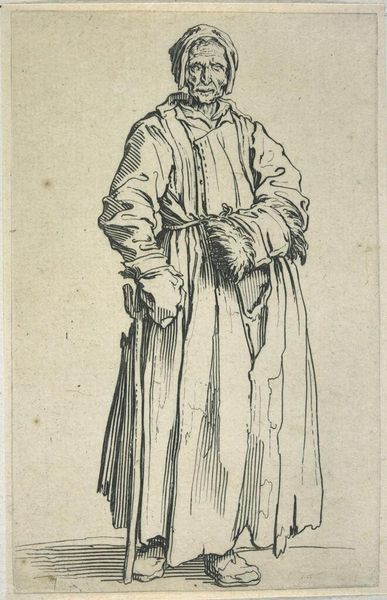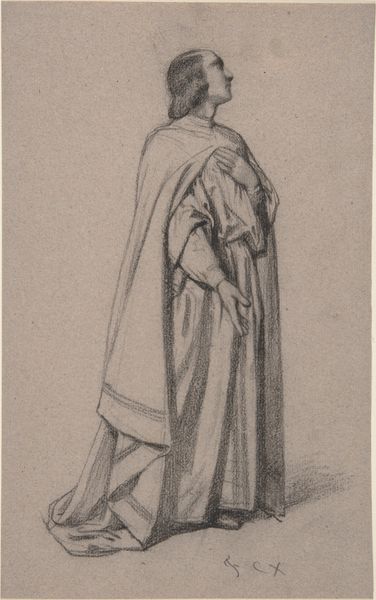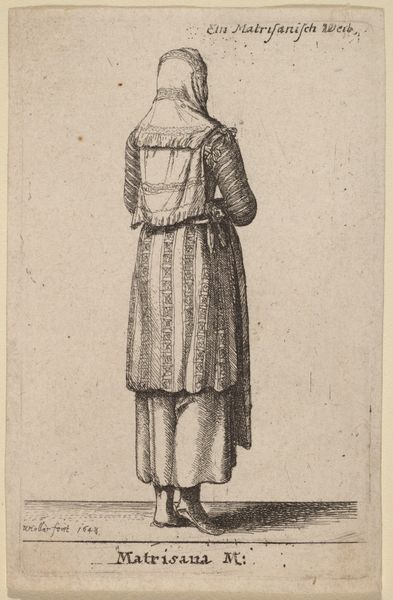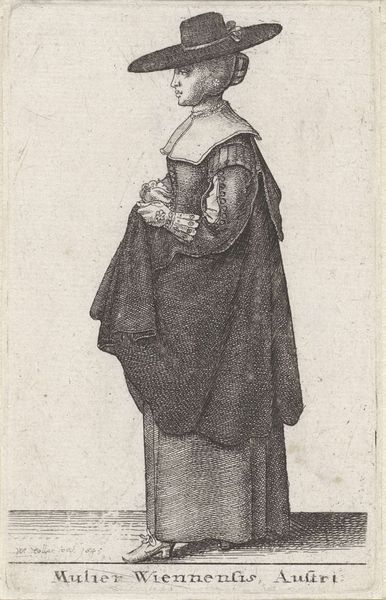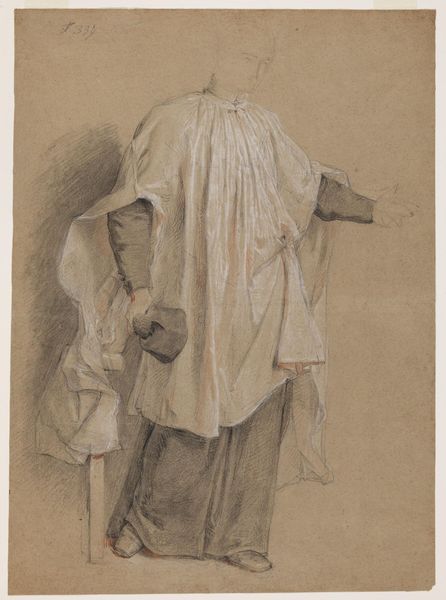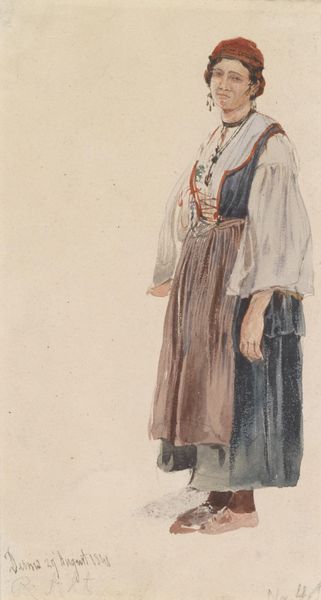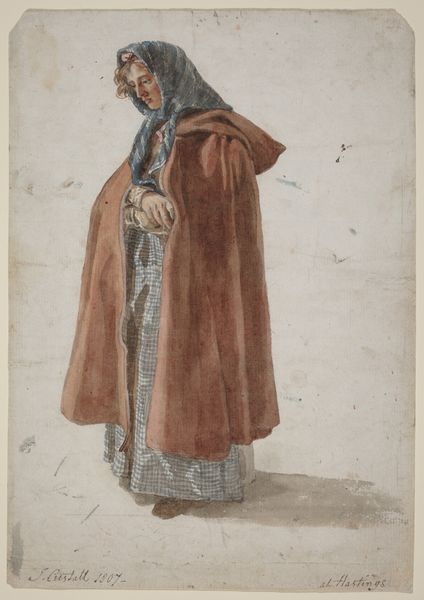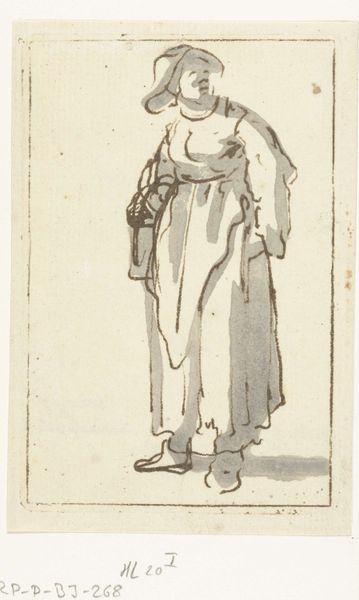
drawing, watercolor
#
portrait
#
drawing
#
figuration
#
oil painting
#
watercolor
#
coloured pencil
#
watercolour illustration
#
watercolor
Dimensions: height 253 mm, width 214 mm
Copyright: Rijks Museum: Open Domain
Curator: Today we're looking at a drawing by Jac van Looij entitled "Benen en voeten van staande vrouwelijke figuur," which roughly translates to "Legs and feet of a standing female figure." It's dated sometime between 1865 and 1930 and is rendered in watercolor and colored pencil. My initial impression is one of studied neutrality. What jumps out at you? Editor: Immediately, it’s the layering that grabs me—not just of paint, but of garments. The materiality of the textiles seems incredibly important. Look at the rough apron, almost a worker's smock, juxtaposed against the likely mass-produced boots. What social narrative is embedded in these textures and layers? Curator: Intriguing. Focusing on the composition, I find the cropped nature of the work paramount. The artist’s decision to isolate the lower portion of the figure invites a particular type of scrutiny. It begs questions about representation itself – what are we meant to glean from this partial view? Is it a fragment of a larger narrative, or does the absence become the narrative? Editor: Exactly. The fragment becomes a focal point. It pushes me to consider the labor implied, the life lived within those clothes. You can almost feel the weight and wear of the materials against the body. How does this connect with the artist’s labor too, his time and craft spent depicting them so meticulously? Curator: Methodologically speaking, Van Looij employs delicate washes of color to define form. The limited palette — the ochres, blues, and grays – creates a somber, almost muted atmosphere. Consider the way the light catches the edge of the step, how that one sharp contour emphasizes the figure’s weight and presence in the space, despite the truncation. Editor: It makes me think about the socio-economic status indicated through such visual vocabulary: The workaday garb points toward a certain social standing, and, combined with the artistic medium— drawing versus oil painting—forces us to ask about art's intended audience. How accessible was art, and art training, for someone like Van Looij? Curator: Ultimately, this focused study allows us to really examine the essence of form and the way it dictates how we respond to an image, even without a fuller context. Editor: Indeed. Peeling back these visual layers, it is powerful how an image focusing merely on legs and feet prompts so much thinking around materiality, class and social context.
Comments
No comments
Be the first to comment and join the conversation on the ultimate creative platform.
